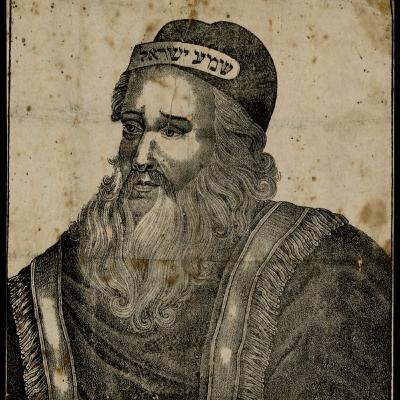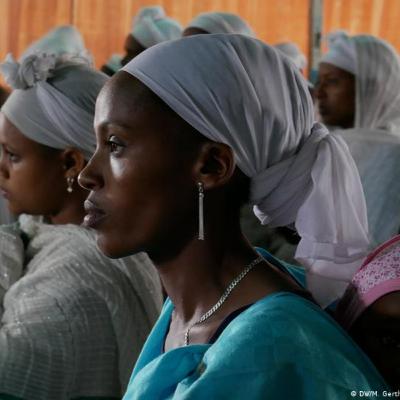Discover Down The Rabbi Hole
Down The Rabbi Hole

42 Episodes
Reverse
Today - 27 Adar, 5785/March 27 2025 - is the 150th yahrzeit of R. Yosef Shaul Natansohn, author of Shu"t Shoel U-Meshiv. In this podcast, we will explore a bit about who he was and the world in which he lived and operated.Here's a link to the map of Shoel U-Meshiv's responsaLink to the teshuvah on the abusive teacher: https://www.sefaria.org/Shoel_uMeshiv_Mahadura_I.1.185.1?lang=biEnglish bio of R. Yosef Shaul Natansohn, by Haim Gertner, for YIVO: https://encyclopedia.yivo.org/article/1496
Rabbi Shimon bar Yohai (Rashbi) is one of the most evocative figures in Jewish history. Not only is he one of the greatest tanna'im and a primary disciple of Rabbi Akiva, but he is credited with composing the Zohar during the thirteen years that he lived in a cave, hiding from the Romans.
In this series, we will look not only at the famous aggadot about Rabbi Shimon Bar Yohai from Shabbat 33b-34a, but at a series of passages from the Gemara that broaden the story into something much bigger.
Throughout the series, I will offer occasional historical and methodological points about the composition of the Gemara (specifically the Bavli) and how to learn it. We will make extensive use of parallel passages from elsewhere in Rabbinic literature in order to understand what the Bavli's editors are trying to teach when they reshape the materials they received into the stories before us. This is not a history series. We may occasionally discuss historical events, but the primary focus is to understand the Gemara itself.
In this first episode, we discuss the setting of the Rashbi stories: when and where Rashbi lived, who his contemporaries were, who his teachers and students were, and what momentous events transpired in his lifetime.
Some people use lettuce, and some use horseradish. But which is the "real" marror? Both? One or the other?
In this episode we look at how two different sages, living a century apart, addressed this issue. It also gives us some insight into the personalities of these two great sages.
The texts that we will study can be found here:
Chacham Tzvi #120: https://www.sefaria.org.il/Chakham_Tzvi.120.1?lang=he
Chasam Soder, Orach Chaim 132: https://www.sefaria.org/Responsa_Chatam_Sofer%2C_Orach_Chayim.132.5?lang=he
חג כשר ושמח!
Hakham Zvi #93 and She'elat Yaavetz 2:82 address the question of whether a golem - an artificial human, a manmade man - may be counted for a minyan. This seems like a really strange question, but it actually gets to some of the major philosophical issues of the 18th century. If God is compared to a Divine Clockmaker, does that mean that humans are really sophisticated clocks? Can the process of creating humans be duplicated? What are the basic building blocks of creation? These questions and more underlie a superficially bizarre and arcane halakhic question.
According to a well-known narrative, the Bnei Yisrael did not change their names, language, or dress in Egypt. Elsewhere I have written about the origins and iterations of this and related ideas. See: https://www.academia.edu/28574595/_They_did_not_Change_their_Names_their_Language_or_their_Dress_The_Life_cycle_of_a_Peculiar_Midrashic_Variant. An interesting treatment of this issue is found in a "quasi-responsum" or "pseudo-responsum" of Rav Asher Weiss: Minchas Asher on Shemos, siman 1. Available here: https://minchasasher.com/shiur/shmot-shmot-shiurim/jewish-identity-shelo-shinu-5778/. I think this essay actually helps us understand Rav Asher and his public persona, how he perceives himself as a bridge between different worlds.
Recently there has been a lot of discussion about the origins of the people of Israel and who are the "real" descendants of the tribes of Israel. In this episode, we look at a responsum from the 1500s that indirectly addresses questions about how we "know" who is a Jew or Israelite. The question of how we know things is crucial for understanding the history of Halakhah, but also for understanding the world we inhabit and the beliefs if the people who are shaping it. This responsum from 500 years ago therefore has a great deal of contemporary importance, on many levels.
Here's a link to the responsum we studied, with my English translation: https://www.sefaria.org/Teshuvot_HaRadbaz_Volume_4.1290.1?lang=bi
Here's a link to Radbaz's related responsum: https://he.wikisource.org/wiki/%D7%A9%D7%95%22%D7%AA_%D7%A8%D7%93%D7%91%22%D7%96/%D7%97%D7%9C%D7%A7_%D7%96/%D7%94
The letter of Eldad HaDani: http://www.daat.ac.il/daat/history/tkufot/eldad1-2.htm
Menasheh ben Israel on American tribes as lost Israelite tribes, early 1600s: https://archive.org/details/menassehbenisrae00manauoft/page/16/mode/2up?view=theater
This episode is a bit of an experiment, to see if a recorded shiur with a little intro "works" as a podcast, as a millennial Twitter follower suggests. The topic is the teshuvah of Chavos Yair on the recitation of Kaddish by women, and it's an attempt to understand that particular responsum in its context. It is not intended practically. Here is a link to the responsum. https://www.sefaria.org/Havot_Yair.222
In honor of Thanksgiving, a short episode on why the great Jewish unconscious deemed turkey kosher (and Ashkenazim treated corn as kitniyot). Funny enough, it's the same reason
An approach to what we are trying to accomplish on Yom Kippur, weaving together themes from the two goats offered in the Temple, Moshe's argument to God to spare the people of Israel, Yitzchak Avinu's selection of Yaakov over Esav, and some basic ideas about labor, unions, and negotiation. This is an elaboration of something I said in my conversation with Rav Moshe Taragin here: https://youtu.be/AFfwgcnkcjE
Some more insights into how Elul became Elllluuuuullll, after some great listener feedback.
There's no doubt that Elul has a certain feel, a certain vibe. But if you look at classical sources, there's no mention of Elul being a time for introspection or repentance or, really, anything. How did it get to be the way it is?
Why do we answer אמן to our own recitation of the third berakhah of Birkat Hamazon? The answer is halakhic and has to do with the structuring of berakhot in series. Ashkenazim and Sephardim have slightly different approaches. But according to all, Birkat Hamazon doesn't really follow the rules. To understand what's going on behind the halakhah, we need to understand how the Sages imagined the history of Birkat Hamazon and how they viewed the fall of Betar in the year 135 - an event that we commemorate on Tisha B'Av as well as on Tu B'Av.
There was an entire section of our conversation that I forgot to publish. This was supposed to be part of the first episode with Prof. Saiman. I've added the recordings to that episode and also posted it as a "standalone" episode for people who already listened.
In this episode we discuss observances - specifically pilgrimages to the grave of Reb Shayale of Kerestir and other kivrei tzadikim in far-flung places, as well as schlissel challah, which are observed during this time of year - and consider the factors that may drive the significant surge in their popularity.
I am joined once again by Prof. Chaim Saiman, author of Halakhah: The Rabbinic Idea of Law, a professor at the Charles Widger School of Law at Villanova University, and a close friend of almost 30 years.
In this episode, we look at the development of customs, nusach, and perhaps Halakhah more generally by looking at Yom Ha'atzma'ut observances, which are changing in real time. Includes a fascinating observation about a particular milestone in reception history of observances.
I am joined by Prof. Chaim Saiman, author of Halakhah: The Rabbinic Idea of Law, a professor at the Charles Widger School of Law at Villanova University, and a close friend of almost 30 years (!).
In this episode we delve into the murky origins of the Ashkenazic custom to avoid Pesach and offer what I think is the most compelling explanation. We also get into some other customs that originate in Medieval Ashkenaz. Finally, we offer some thoughts on the relationship between Ha Lachma Anya, Yachatz, and the Afikoman, concluding with some speculation on how this theory fits into the history of - yup, Medieval Ashkenaz.
In this episode we delve into R. Chaim Kanievsky's treatise on tattoos, called Patshegen HaKetav, as an example of how he thought, organized, and wrote. Along the way, we get a bit sidetracked by halakhic questions pertaining to tattoos and even suggest a "mekor" for the mistaken belief that someone with a tattoo cannot be buried in a Jewish cemetery.
Link to the first page of R. Chaim Kanievsky's Patshegen HaKetav: https://www.hebrewbooks.org/pdfpager.aspx?req=47701&st=&pgnum=58
Link to an article I wrote on tattoos 9 years ago: https://www.jta.org/2013/03/07/ny/the-tattoo-still-taboo
A blog post from 15 years ago in which I discuss the issue and present the responsum of Minhat Yitzhak: http://adderabbi.blogspot.com/2007/04/tattoos.html
On what made R. Chaim Kanievsky unique. And on the social leadership role that he held - or that was foisted upon him - in his later years.
In this final episode of the series on Peninei Halakha we get into the meat of the current controversy and its roots. We also discuss "wholesale" vs. "retail" Halakha and the importance of this distinction.
In this episode, I discuss three genres of halakhic writing: codes, commentaries ("nosei Kelim"), and responsa (teshuvot). Each genre has specific objectives and goals. After a discussion of commentaries, I begin the discussion of codes vs. responsa by looking at the rulings of Rav Melamed and Rav Asher Weiss on a particular issue, one that is the subject of much controversy. Through this we start to get a glimpse of why Rav Melamed has begun to face opposition.
















